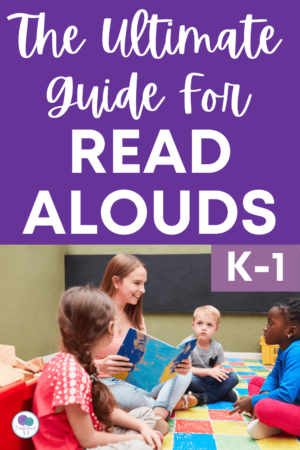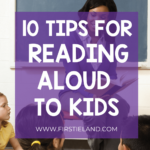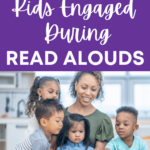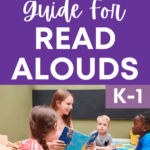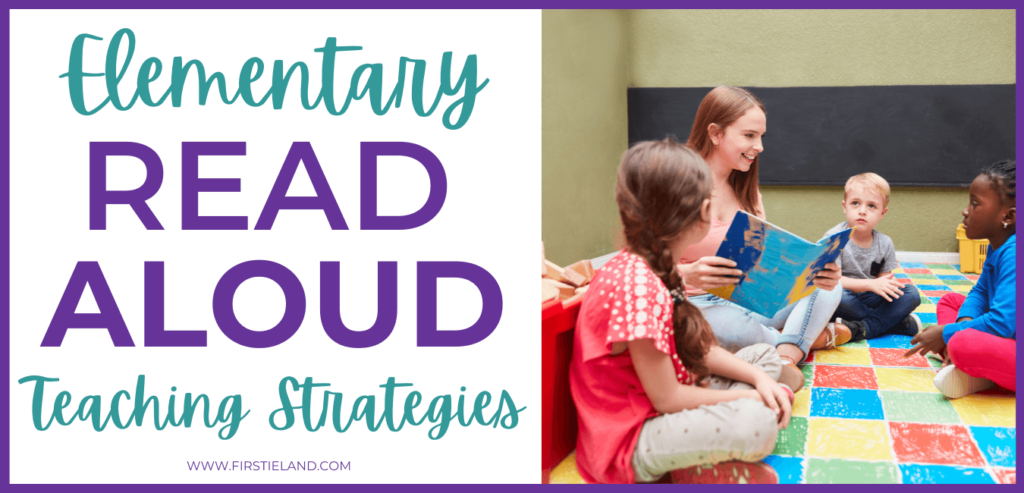
Reading aloud to children in the classroom is vitally important to their success as a reader. But is it really as simple as just sitting down to read a book? Reading aloud to kids certainly isn't a complicated process but there are a few things to consider before your next read aloud. Here are important strategies to remember when reading aloud to students.
WHAT IS A READ ALOUD?
Simply put, a read aloud is a time when teachers, parents, or caregivers can sit with a child and read them a story. When teachers are doing read alouds in an elementary classroom, they use this time to introduce students to new literature, genres, reading comprehension strategies, and the love of reading.
Reading aloud is also a great way for teachers to demonstrate fluent reading or give students background knowledge about a topic they'll be learning about in class. Early childhood educators know that gathering together on the carpet for a read aloud is a great opportunity to build classroom community.
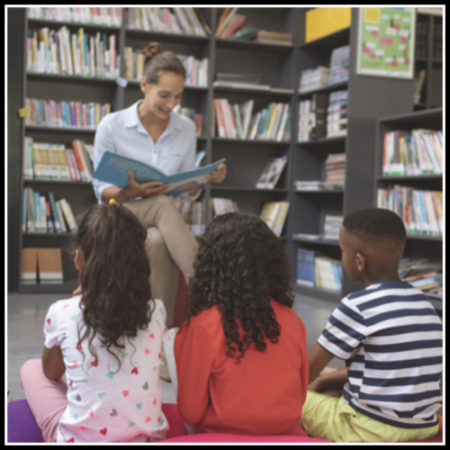
HOW LONG TO PLAN FOR A READ ALOUD
Read alouds can serve different purposes in an elementary classroom. Sometimes you'll just have an extra five minutes before you leave for lunch. This is a great time to read a quick chapter from a book you're reading to your class each day.
Sometimes you'll want to do interactive read alouds with your students. An interactive read aloud is when you read a text and pause at different times to discuss new words or ask open-ended questions about the story. These questions can often lead to a class discussion so you'll need more time for this style of read aloud. Usually, read-aloud time is about 15-20 minutes in the primary grades.
No matter the type of read aloud you'll be doing, give yourself enough time for you and the students to enjoy the story. Some teachers like to begin their day with a read aloud while other teachers like to read after coming in from recess or at the end of the day. Add your read aloud time to your daily lesson plans so you will always have time for it. In my classroom, we begin read alouds on the first day of school!
HOW TO CHOOSE A GOOD READ ALOUD
When deciding which books to choose for a read aloud, look for books with a great storyline and beautiful pictures. In the primary grades, young children like books with funny characters and a plot that they can relate to. Find books that have interesting characters and rich vocabulary. Reading aloud is also a great time to help kids develop their vocabulary skills so choose books with unfamiliar words that you can introduce to children.
Kids also love books that are funny or with predictable text. If you're not sure where to begin, choose books that are written by favorite authors or an award-winning book. You usually can't go wrong with a book that has earned the Caldecott Medal of Honor or a Newbury Award winning book.
Another great idea is to keep a basket of your favorite books, with a seasonal or monthly theme, beside your chair on the carpet. This is also where you can keep a basket of chapter books such as Charlotte's Web or Charlie And The Chocolate Factory. Your students will look forward with anticipation to listening to a chapter read aloud each day.
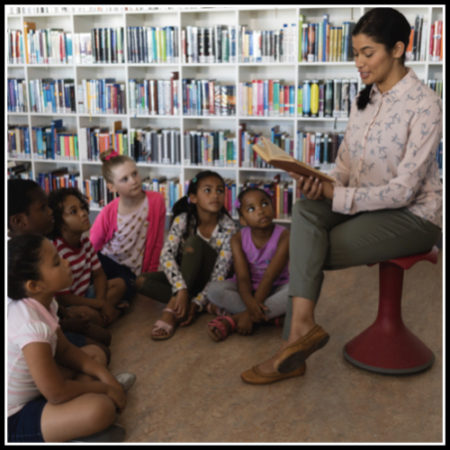
Not sure where to start? This year-long set of read alouds and activities has everything you need.
CLICK HERE TO VIEW THIS RESOURCE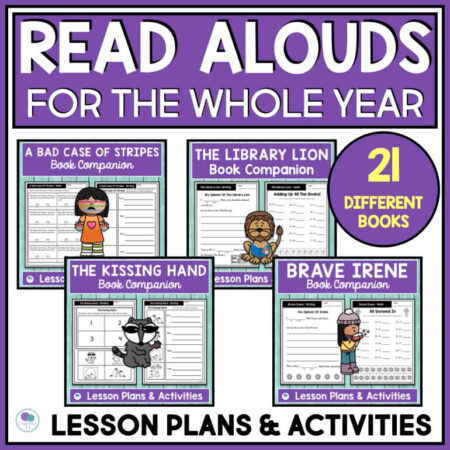
HOW TO PREPARE FOR THE READ ALOUD
Reading aloud should be part of your daily routines in your classroom. Interactive read-alouds allow you to discuss story elements like character, setting, plot, problem, and solution. Before reading to your students, preview the text. Practice reading it out loud. Think about the characters in the book. What voices will you use for each character? Make your voice sound gruff, squeaky, or whatever fits the character.
As you preview the story think about the different skills that you want to teach with this text. Decide where you'll pause to emphasize the story when you're reading aloud to children. Is there a certain picture you want the students to look at and notice details? Are there hints as to what will come next in the story? Make a mental note of where you'll pause to ask questions. A good idea is to put sticky notes inside the book to remind yourself where you want to stop as you're reading the text.
Doing an intentional read aloud like this is one of the best ways to help students become good readers. This is where you'll teach students the things that they should be looking for and thinking about when they're doing their own independent reading. Reading aloud to students gives rich opportunities to teach new vocabulary words, word recognition, and how to look for deeper meaning in a text. Reading aloud is also where you'll show students how to look for important details in a story which will help them with comprehension.
HOW TO BEGIN THE READ ALOUD
Begin your interactive reading activity by introducing the book to the students. This is your opportunity to point out the title, author, and cover art. Ask students what they think the story will be about. If they are young students in pre-K or kindergarten, show the students the front and back of the book. Show them how you turn the pages, how to begin at the top and move to the bottom of the page.
Before you begin the reading of the book, discuss how this book connects to other books you've read to the students. Explain to them why you chose this book and discuss any prior knowledge they have of the story. I usually prepare the students by telling them some things to look for in the selected text or something I'll ask them when the story is finished. This helps them stay focused and concentrate on the story.

WHAT TO DO DURING A READ ALOUD
When you're reading a story to kids at the kindergarten or 1st grade level, you should be sure to show them the pictures. If it's a picture book, hold the book so that the students can all see the pictures as you read. Give your whole class plenty of time to look at the pictures and see all the details.
Use expression in your voice and change it for different characters. Students of all ages love to hear a squeaky little mouse voice or a grumpy old man voice in stories! Children don't judge so have fun with it! They'll love the story even more and it's one of the most meaningful ways to make a story come to life.
Remember not to read too fast. Read fluently but slowly so children have time to think about what's happening in the story and really enjoy it. Finally, ask questions during your teacher read-alouds, but not too many. Don't ruin the story by continuously starting and stopping with an overabundance of questions. Encourage students to participate by having them make predictions of what will happen next. Accept all answers to your questions even if it doesn't seem to make sense. Simply say “Yes, that might happen. Let's see what happens next!”
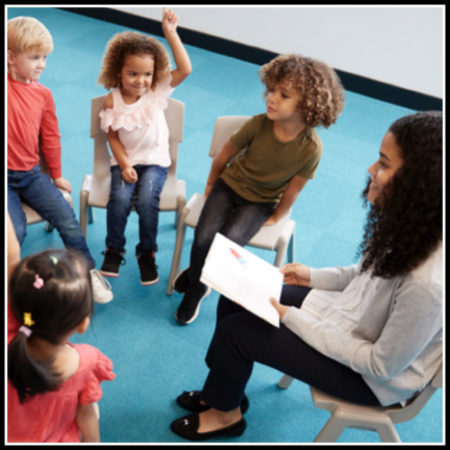
QUESTIONS TO ASK DURING THE STORY
When you're making your text selection, choose books that lend themselves to open-ended questions. Read through the story and plan your questions ahead of time. What is the big idea of the story? Ask questions related to that main idea. Start your questions with words like “I wonder why……” and then accept students responses. You can use your questions to make connections such as how the story relates to your students lives, their classroom, and their families. Use the read aloud time to clarify any new vocabulary or tricky words, especially for your English language learners.
HOW TO END A READ ALOUD
When you're finished reading the story, wrap up your read aloud by pointing out a particular part of the story or important concepts that you really liked. Ask students what part they liked the best and ask open-ended questions with no right or wrong answer. This will encourage class participation from all students.
The end of the story is a great time to encourage higher order thinking. Keep an anchor chart near your carpet that reminds students of the types of things they should look for when reading a story. Refer to your anchor chart at the end of the story when you're asking those final questions. Show the students a particular page in the book and ask things like “Why do you think this characters face looked like this on this page?” or “How did this character feel when this happened and how do you know?”

COMPREHENSION STRATEGIES DURING READ ALOUDS
A great read aloud makes the perfect segue into reading and writing strategies.
Reading Comprehension Ideas For Any Story
- Have students use key details in the text to discuss characters, setting and plot.
- Discuss point of view – who is telling the story?
- Use a Venn diagram to compare the adventures of different characters in the story.
- Find words in the story that tell how a character feels.
- Photocopy some of the pages of the story and cut out the characters. Make them into popsicle stick puppets and have the students practice retelling the story.
- Make a T chart and compare two different versions of the same story.
Connect Reading To Writing
- Have students write about the adventures of the characters in the story.
- Continue the story – write about what could happen next in the story.
- After retelling the story with your students turn it into a procedural writing lesson. Have students do their own writing that tells what happened first, next and last in the story.
- Have students write their opinion of a character in the story – show them how to state their opinion, give a reason for their opinion and some examples from the book why they feel that way.
- Use non-fiction text to have your students learn about writing reports. We read and write about pumpkins in the fall, polar bears in the winter and oviparous animals in the spring!
Reading aloud to students may be one of the single most important activities that you do during the school day. Students will look forward to the read-aloud experience each day. They'll love listening to stories of kings and queens, dragons, funny animal characters, and more! As your students become proficient readers, they'll look back to those stories you read to them. They'll be excited to read them on their own!
Ready to get started with read alouds? This bundle includes 21 different read aloud activities for high-quality literature that's perfect for the whole year! Includes reading, writing, crafts, and games that are even great for emergency sub plans! Click here to take a closer look.

Looking for more read-aloud tips and ideas? Check out these posts:
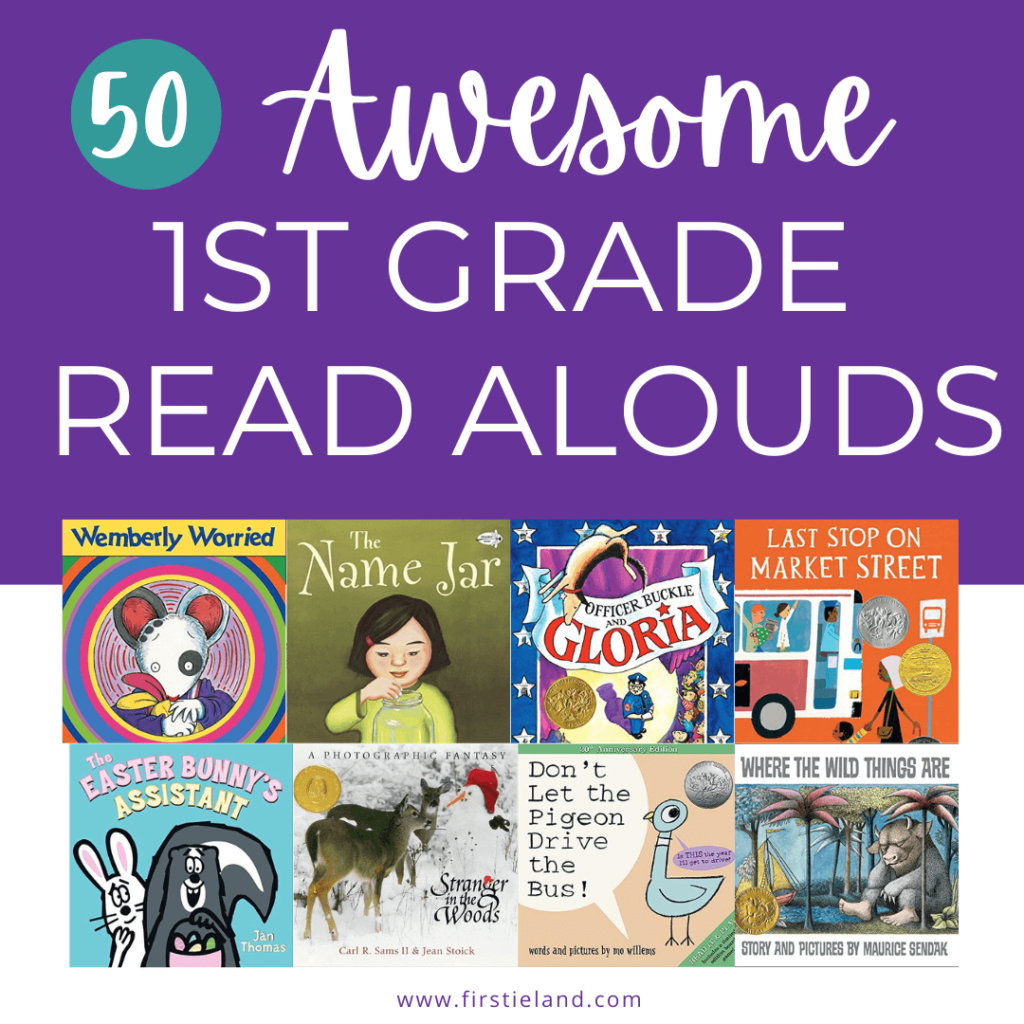

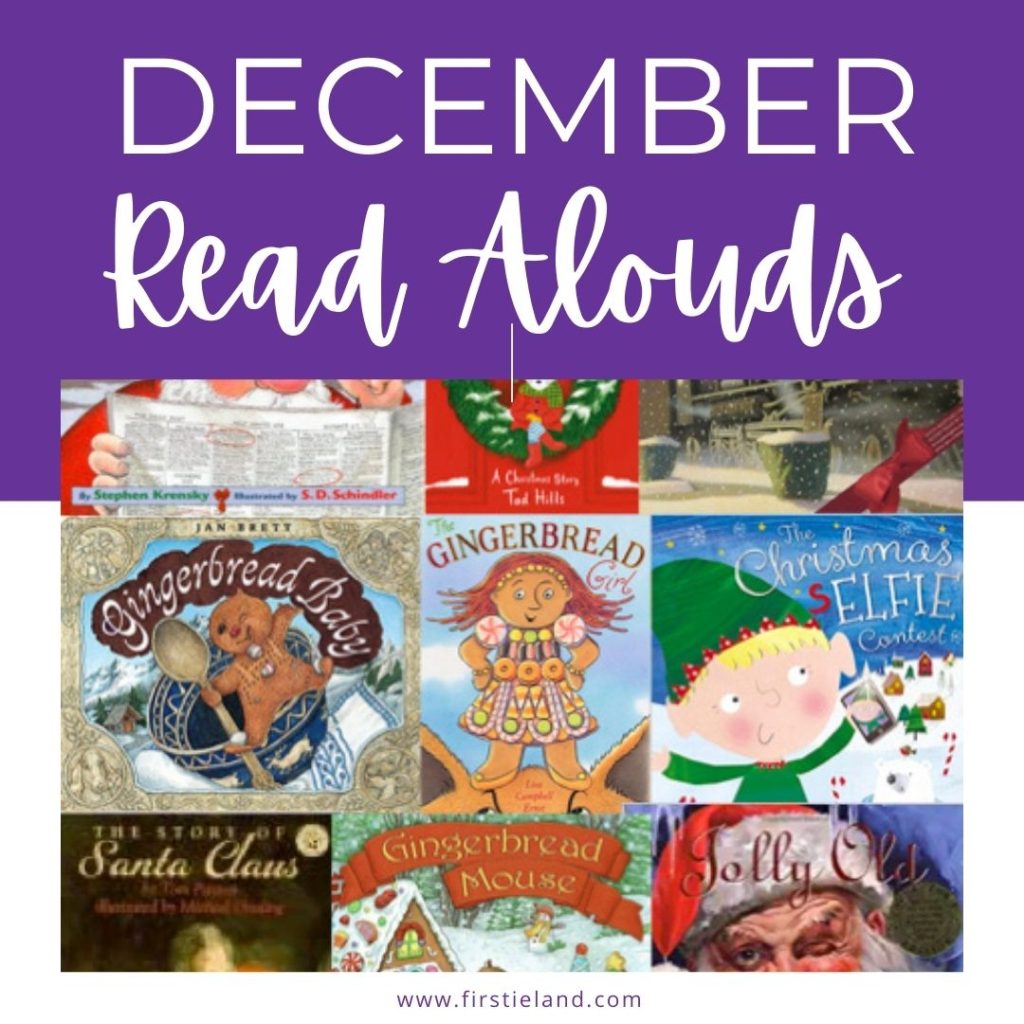
Want to remember these tips? Pin for later!
